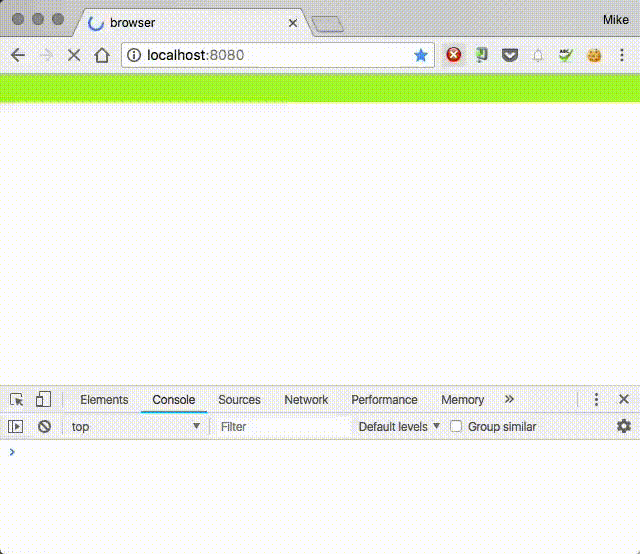m4d_router is a client routing library for Dart. It helps make building
single-page web apps and using HttpServer easier.
Add this package to your pubspec.yaml file:
dependencies:
m4d_router: any
Then, run pub get to download and link in the package.
Live: m4d_router.example.mikemitterer.at
Source on GitHub
void main() {
final router = new Router();
configLogging(show: Level.INFO);
_configRouter(router);
dom.querySelector('#output').text = 'Your Dart app is running.';
}
void _configRouter(final Router router ) {
router
..addRoute(name: "Test I", path: new UrlPattern('/#/test'),
enter: (final RouteEnterEvent event) {
_log(event.route.title);
_logger.info("Path: ${event.path} Params: ${event.params.join(",")}");
_showImage("https://upload.wikimedia.org/wikipedia/commons/1/11/Test-Logo.svg");
})
..addRoute(name: 'Cats', path: new ReactPattern('/cats'),
enter: (final RouteEnterEvent event) {
_log(event.route.title);
_logger.info("Path: ${event.path} Params: ${event.params.join(",")}");
_showImage("https://i1.wp.com/www.oxygen.ie/wp-content/uploads/2016/11/main_1500.jpg?resize=750%2C400");
})
..addRoute(name: 'Specific cat', path: new ReactPattern(r'/cats/(\w+)'),
enter: (final RouteEnterEvent event) {
_log("${event.route.title}: ${event.params.join(",")}");
_logger.info("Path: ${event.path} Params: ${event.params.join(",")}");
if(event.params.first.toLowerCase() == "grumpy") {
_showImage("https://pbs.twimg.com/media/CsW0pmxUsAAuvEN.jpg");
} else {
_showImage("https://catzone-tcwebsites.netdna-ssl.com/wp-content/uploads/2014/09/453768-cats-cute.jpg");
}
})
..addRoute(name: "Google for cats", path: new ReactPattern('/google'),
enter: (final RouteEnterEvent event) {
_log(event.route.title);
_logger.info("Path: ${event.path} Params: ${event.params.join(",")}");
_showImage("https://upload.wikimedia.org/wikipedia/commons/a/a5/Google_Chrome_icon_%28September_2014%29.svg");
})
;
// optional
router.onEnter.listen((final RouteEnterEvent event) {
_logger.info("RoutEvent ${event.route.title} -> ${event.route.urlPattern.pattern}");
});
// optional
router.onError.listen((final RouteErrorEvent event) {
_logger.info("RouteErrorEvent ${event.exception}");
});
router.listen(); // Start listening
}
void _log(final String logMessage) {
final logElement = dom.querySelector("#log") as dom.UListElement;
logElement.append(new dom.LIElement()..text = logMessage);
}
void _showImage(final String url) {
final img = dom.querySelector("img") as dom.ImageElement;
img.src = url;
}Route is built around UrlPattern a class that matches, parses and produces
URLs. A UrlPattern is similar to a regex, but constrained so that it is
reversible, given a UrlPattern and a set of arguments you can produce the
URL that when parsed returns those same arguments. This is important for keeping
the URL space for your app flexible so that you can change a URL for a resource
in one place and keep your app working.
Route lets you use the same URL patterns for client-side and server-side routing. Just define a library containing all your URLs.
As an example, consider a blog with a home page and an article page. The article URL has the form /article/1234. We want to show articles without reloading the page.
On the browser, there is a Router class that associates UrlPatterns
to handlers. Given a URL, the router finds a pattern that matches, and invokes
its handler. The handlers
are then responsible for rendering the appropriate changes to the page.
